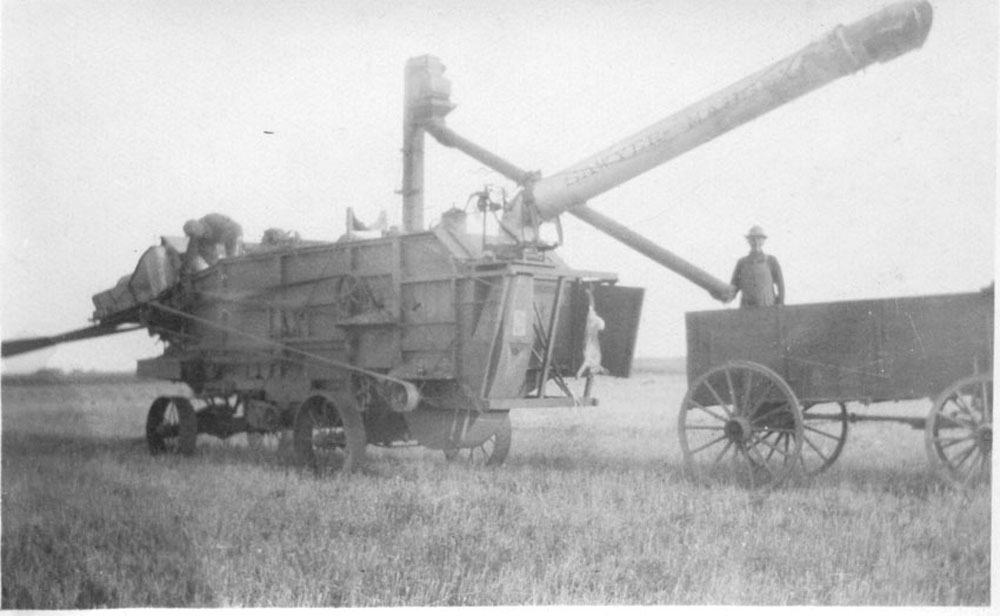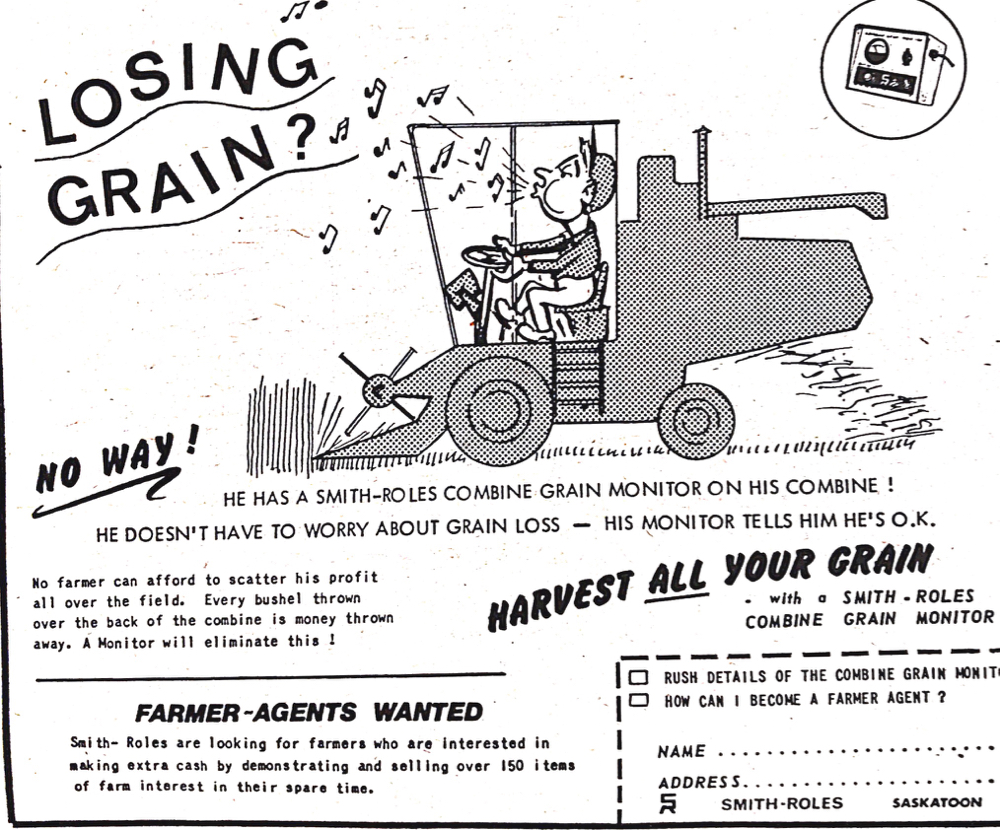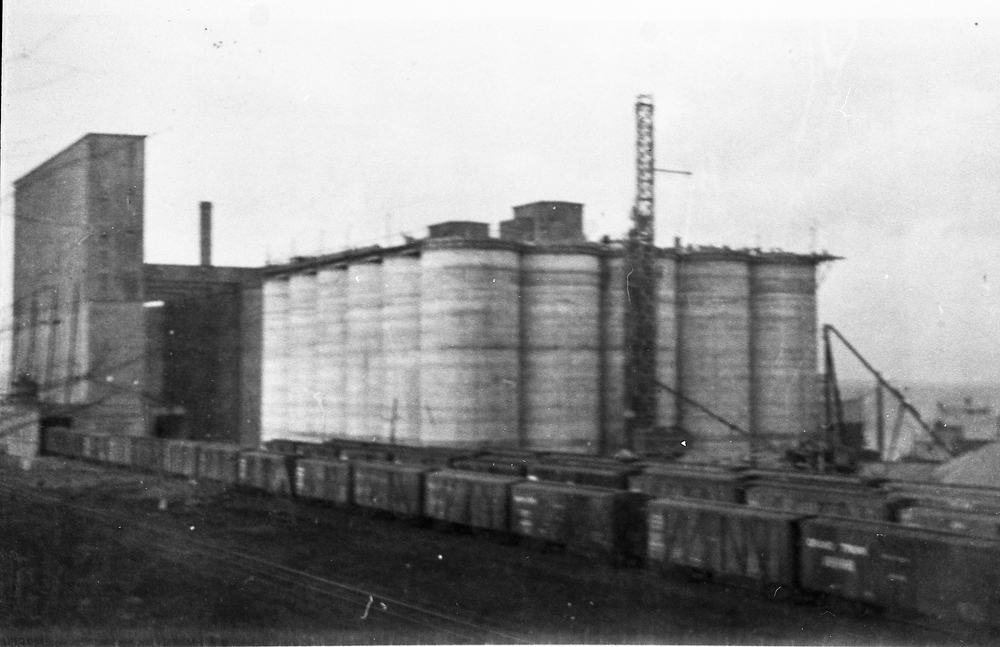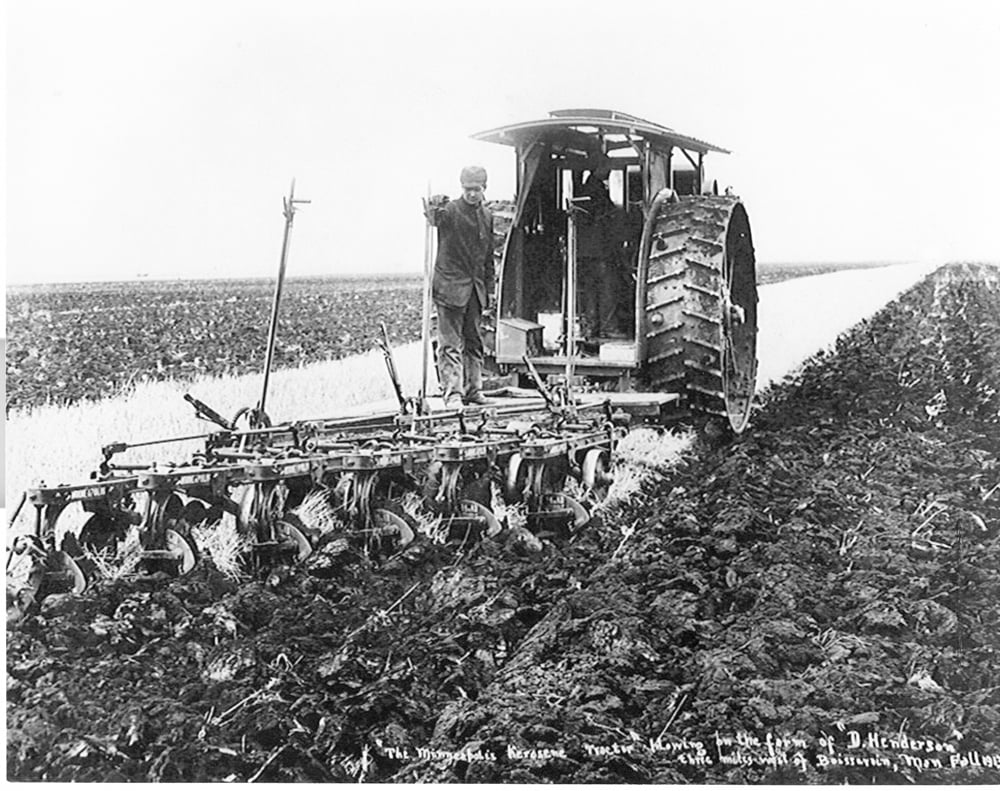Among the photos donated to the Manitoba Agricultural Museum is a series of photos taken on the Archie McPhail farm northeast of Brandon sometime around 1919. The photo seen here shows the threshing machine in use by Archie McPhail at the time, a wooden Sawyer Massey.
The other photos seen in the series show the machine being powered by a Sawyer Massey 25-45 kerosene tractor which was in production from 1911 to 1922. Given the tractor is fitted with an automotive-type radiator, not the tank type that early production 25-45 tractors were fitted with, it is likely that the outfit, tractor and threshing machine, were purchased sometime after 1912.
Read Also
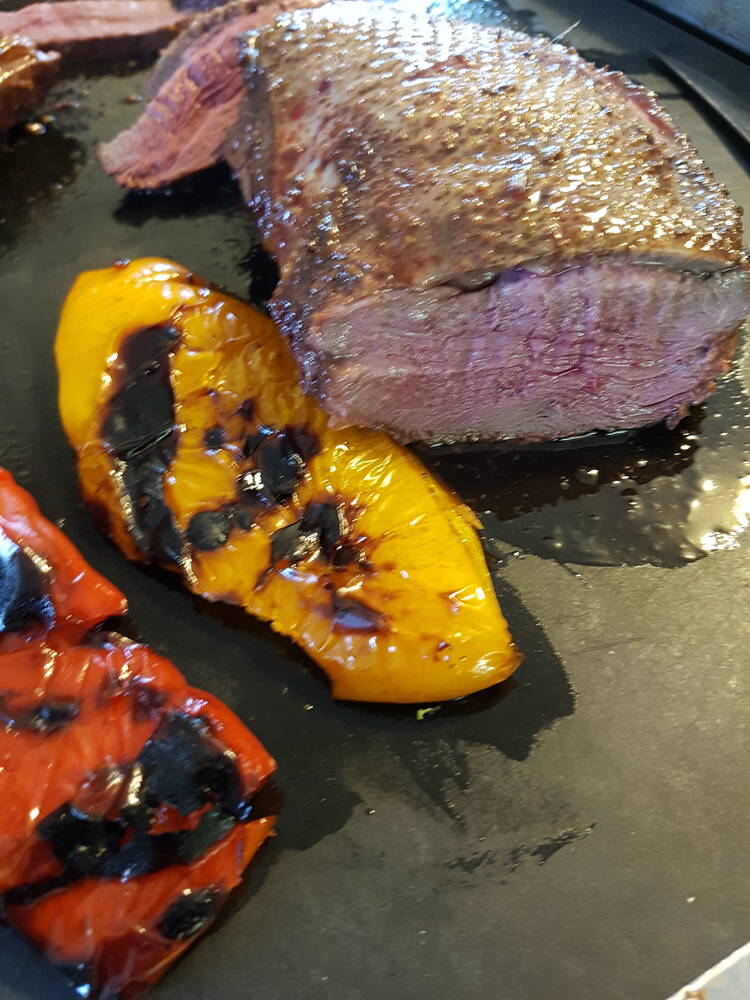
Giant Canada geese have gone wild in Manitoba
Giant Canada geese are seemingly everywhere and can be fine table fare for local hunters, but 70 years ago, they were borderline extinct.
Wooden threshing machines were obsolete by 1919 with the introduction of steel threshers which featured a steel frame to support the threshing mechanism and were covered with light galvanized steel sheathing.
As can be seen above, the wooden machines had a timber frame which supported the mechanism with the sheathing being thin tongue-and-groove wooden boards about three inches in width. Wooden separators posed various problems such as being prone to rot, fire and the need for the machine to be stored and operated in a level position to prevent the wooden frame from “racking” or being twisted which opened the joints of the wooden frame so weakening the frame.
Steel machines were not as prone to these problems and were capable of being abused with minor ill effects. For fire to destroy a steel machine, the machine would have had to be full of straw in order to create enough heat to buckle the frame.
Sawyer Massey may have persisted with wooden machines for several reasons such as a better supply of quality wood in Canada such as red and white spruce, white oak, rock elm and so on, which was available from Ontario forests. As well, Sawyer Massey may have had no choice but to persist in manufacturing wooden separators after 1914 as the war would have absorbed all the steel that manufacturers were able to produce.
As usual in these photos there are some interesting details. Of particular note is the jackrabbit hanging from the rear of the machine. The crew obviously took an opportunity to get fresh rabbit for their supper. At the time fresh meat was fairly rare as there was limited refrigeration available on farm and usually consisted of an ice house. Ice can only keep meat and produce at a temperature just above freezing unless one uses large amounts of salt mixed with the ice.
Generally farmers did not do this due to the expense, labour involved and the problems of what to do with the salt water that resulted. While one could slaughter a beef or hog when a threshing crew was on farm, this was a labour-intensive operation to be undertaken when there was all sorts of other work to be done. If there was a big enough crew to be fed then the farmer would undertake a slaughter.
In addition, in many areas a “beef ring” operated. A beef ring consisted of a number of families. An individual family slaughtered an animal once a week or so and then shared the meat with the other families in the ring. According to some accounts of beef ring operations, some rings featured beef breeds not common today but with some novel genetics that allowed for the animal to consist of nothing but six front legs and a very long neck. Or at least the writers thought so, as the meat was so tough.
Food was prepared by the farmer’s wife and feeding three meals to a threshing crew was a major undertaking which would require not only the wife’s full attention but at least one helper, if not more, in order to generate the volume of food needed for breakfast, lunch and supper. Some accounts of threshing operations mention crews quitting en masse as the food was not adequate in terms of quantity or quality.
Bachelor farmers would be particularly hard pressed and so would need to hire a cook if one could be found. Given the numbers of men involved in a threshing crew, the cost of meals would have been substantial and many farmers would have been tempted to reduce costs where possible. However, in achieving economical meals, the crew may rush the job to escape poor meals and move on to a job that perhaps featured better meals. However, if the crew rushed by “crowding” the separator, this then resulted in the machine throwing grain over. Grain thrown over would cost the farmer more than he saved with substandard meals.

